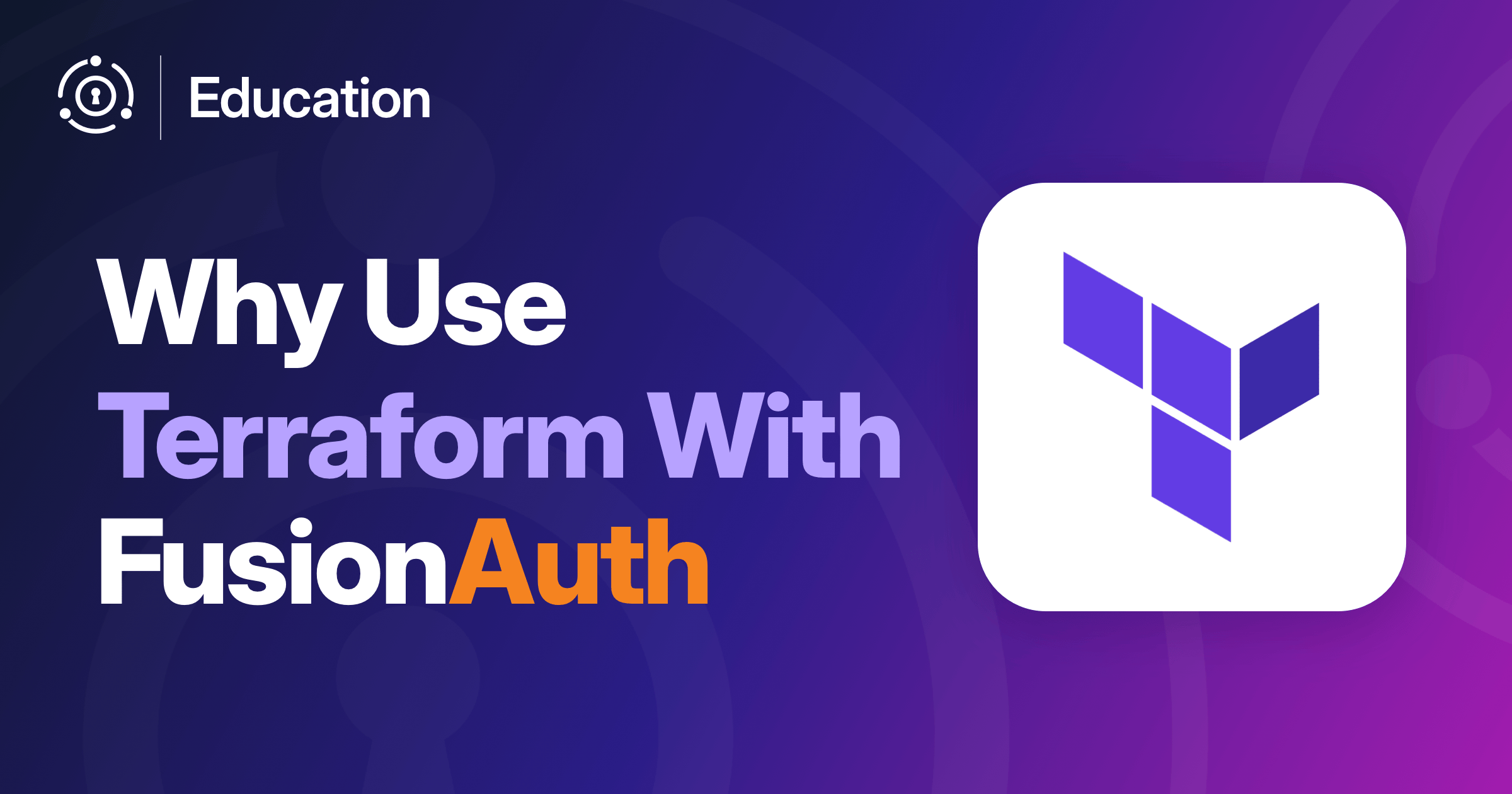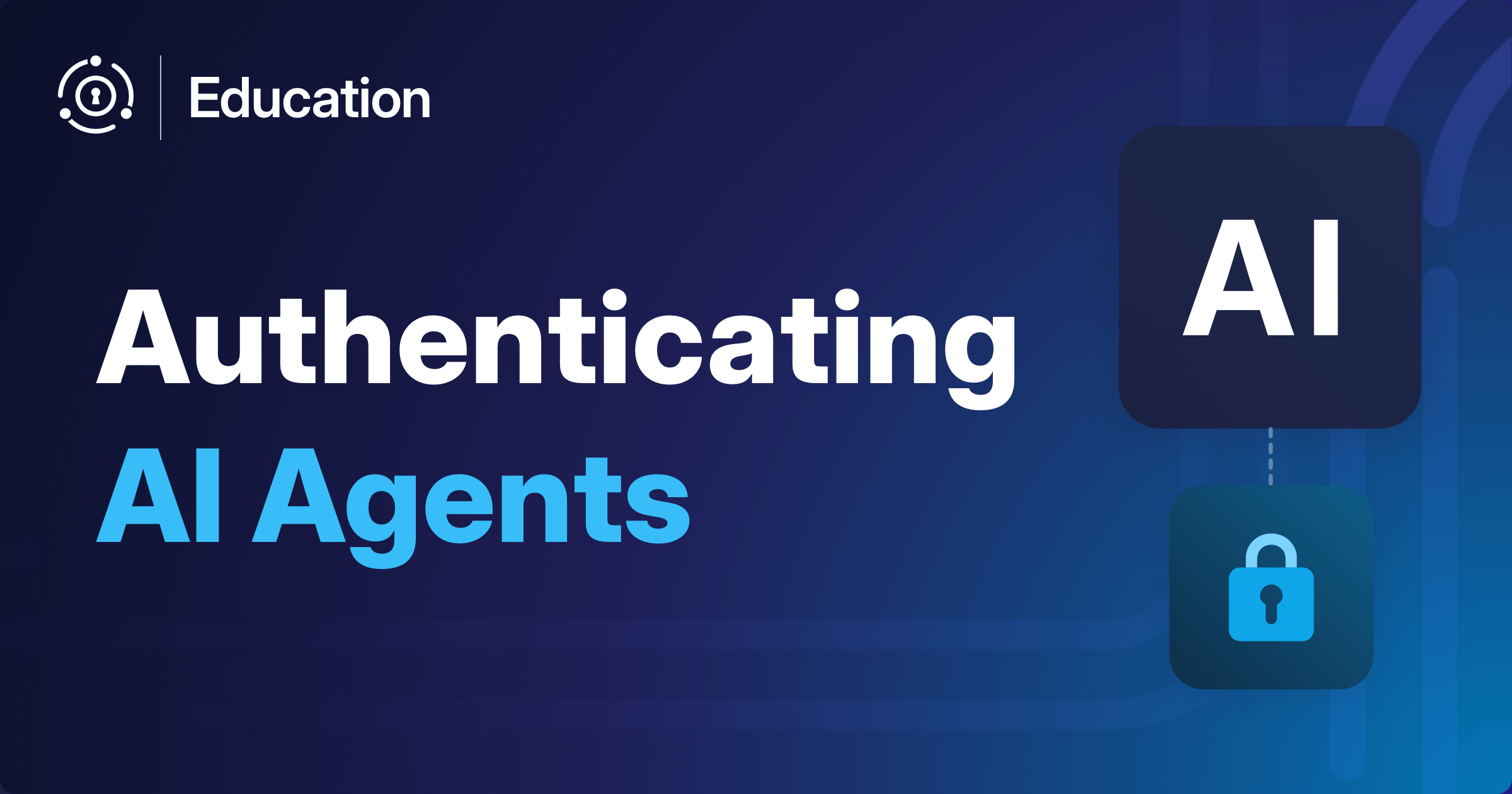Let’s be honest — the only thing better than a fully working auth system is never having to manually configure it again. Enter FusionAuth and Terraform.
In this post, you will learn why you would want to use the Terraform provider for FusionAuth. I’m writing this today because we recently released version 1.0.0 of the Terraform provider. With Terraform, ditch the manual clicks and start defining your identity resources as code.
Wait… What’s Terraform?
Terraform is a powerful Infrastructure as Code (IaC) tool from HashiCorp. IaC tools let you manage and provision infrastructure and services like databases and servers through human-readable configuration files. They are declarative, which means you write down what your infrastructure should look like and let the tool handle the how.
Whether you’re managing a single application or running an identity empire with thousands of tenants, Terraform lets you bring order to the chaos.
Let’s get into using Terraform to manage FusionAuth; with this you’ll enjoy minimal clicking and maximum control.

Why Would I Use Terraform With FusionAuth?
While the FusionAuth admin UI has a clean and intuitive interface, there can be a lot of clicks to manage its configuration. If you’ve ever found yourself meticulously clicking through FusionAuth’s UI to configure applications, tenants, or identity providers—only to realize you forgot a setting or set something incorrectly-you know the pain of manual identity configuration. FusionAuth makes authentication and user management easy, but managing a growing number of configurations manually can quickly become overwhelming. That’s where Terraform comes in.
With Terraform, you can:
- Automate Repetitive Work. Managing FusionAuth through the UI is great at first. However, as your usage evolves, you’ll likely need to do things like duplicate applications that are clones of others, create tenants, configure identity providers and other things on a regular basis. Doing all that manually is a recipe for mistakes and inconsistency. With Terraform, you define these resources once—in code—and can apply the same configuration across dev, staging, and production with confidence.
- Version Control Your Identity Configuration. Terraform configuration is just text files. That means you can put them in Git. You can review changes through pull requests. You can do other things with your infrastructure that you can do with code as well like rolling back to a previous state or tracking the history of changes. Instead of relying on memory or screenshots in an outdated log file, you’ll have the full history clearly documented. While many of the things in this list can be done directly through the FusionAuth APIs, this is one list item the APIs don’t natively cover.
- Ensure Consistency Across Environments. Terraform helps eliminate “it works on my machine” problems by letting you define your FusionAuth setup once and deploy it consistently across all your environments. This is especially valuable if your team is growing or if you’re onboarding other developers who need a local instance of FusionAuth configured exactly the same way as everyone else’s.
- Disaster Recovery & Repeatability. If something catastrophic happens—someone wipes out the wrong tenant or you need to rebuild a dev environment quickly, you can restore your entire FusionAuth configuration from Terraform code. No digging through docs or clicking through menus; just a few commands and you’re back up and running.
How Does It Work?
As mentioned in the above tip, there is a detailed guide on using FusionAuth with Terraform. Here is a high level overview of how the setup works.
Install Terraform And Configure The Provider
First, you install the Terraform CLI and configure the FusionAuth provider with your instance’s API key and URL. The provider acts as a bridge between your Terraform configurations and FusionAuth’s REST APIs.
Optionally Import Existing Configurations
If you’re already using FusionAuth and want to start managing it with Terraform, you can import existing resources into your Terraform state. This lets you bring what’s already set up under Terraform’s control without wiping it out.
Define Your Resources In Code
You’ll create/update configuration files that define all the FusionAuth resources you want to manage. These could include applications, roles, tenants, lambdas, identity providers, email templates, and more.
While Terraform is great for managing infrastructure and configuration, it’s not designed for dynamic data like users and registrations. Users change frequently, are created through application flows, and don’t belong in version-controlled Terraform state files. Instead, user management should happen through FusionAuth’s APIs, Admin UI, or scripts. Terraform is best used for defining the structure of your auth system, not the people inside it.
Initialize Terraform And Apply Changes
Terraform will validate your config files, figure out what’s missing or out of sync, and show you a plan of what it intends to change. Once you approve, Terraform will create, update, or delete resources as needed.
Repeat Across Environments Or Teams
Once your config files are ready, you can reuse them across different environments or share them with other developers to ensure consistency and speed up onboarding. You can learn more about how to use Terraform with FusionAuth with our Terraform guide.
Streamline your identity infrastructure with FusionAuth and Terraform. Schedule a demo to learn how.
Summary
Managing FusionAuth with Terraform might feel like overkill at first, especially for small projects, but the long-term benefits are undeniable. As your infrastructure grows in complexity, automation and repeatability become essential.
Whether you’re a solo developer looking to keep things tidy, or part of a large team needing reliable configuration management, Terraform gives you the power to treat your authentication stack like the serious infrastructure it is.
So stop clicking and start coding, your future self will thank you.










